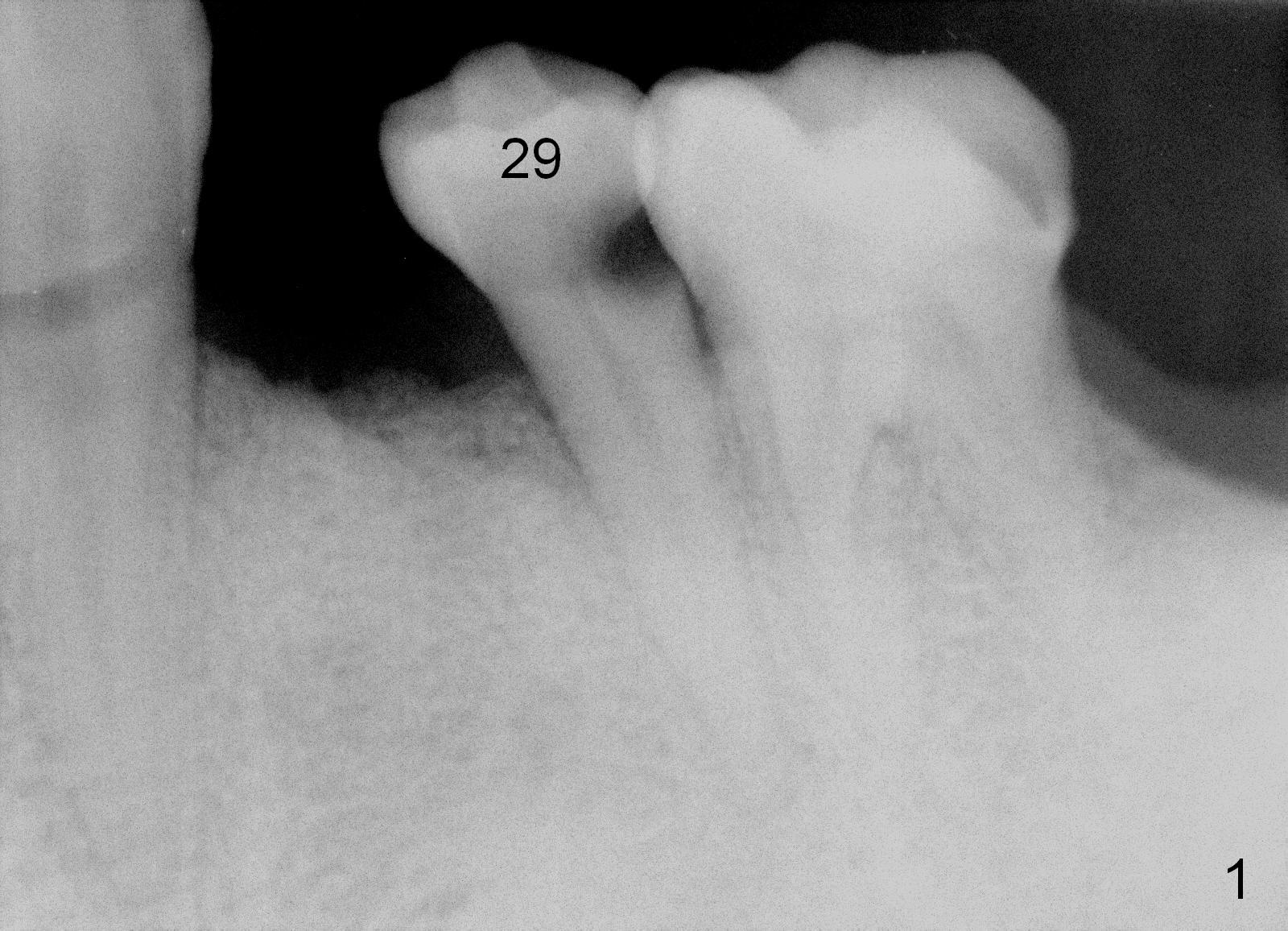
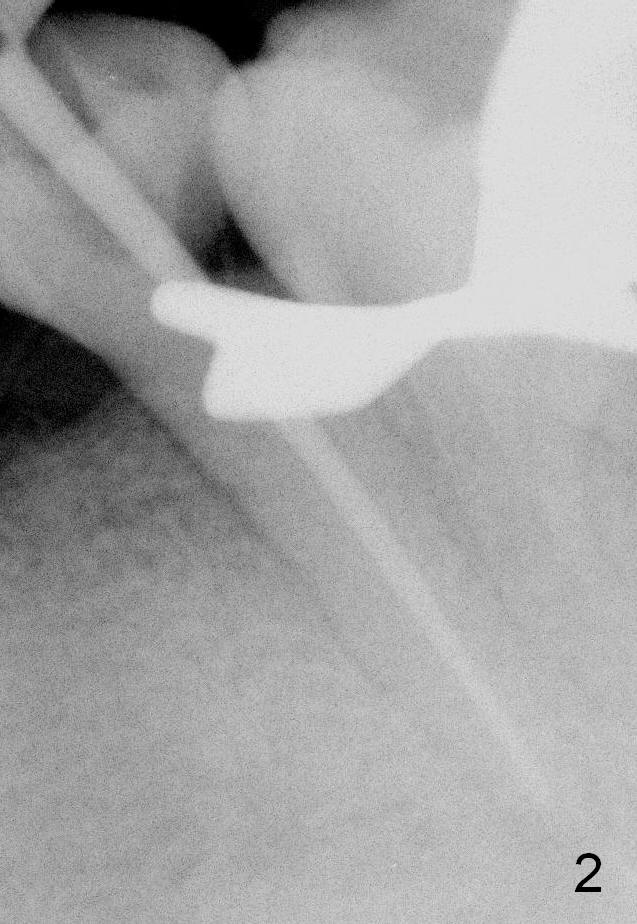
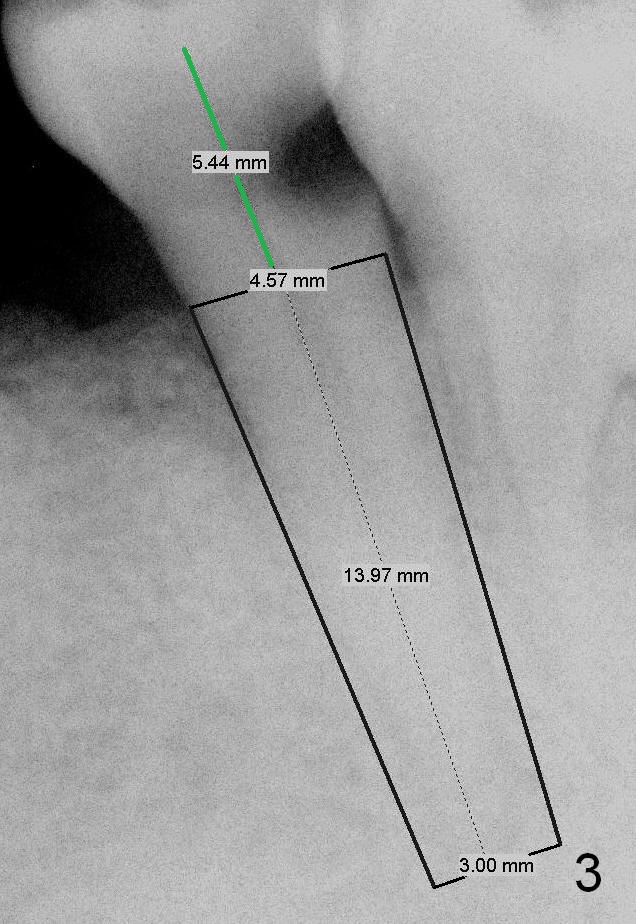
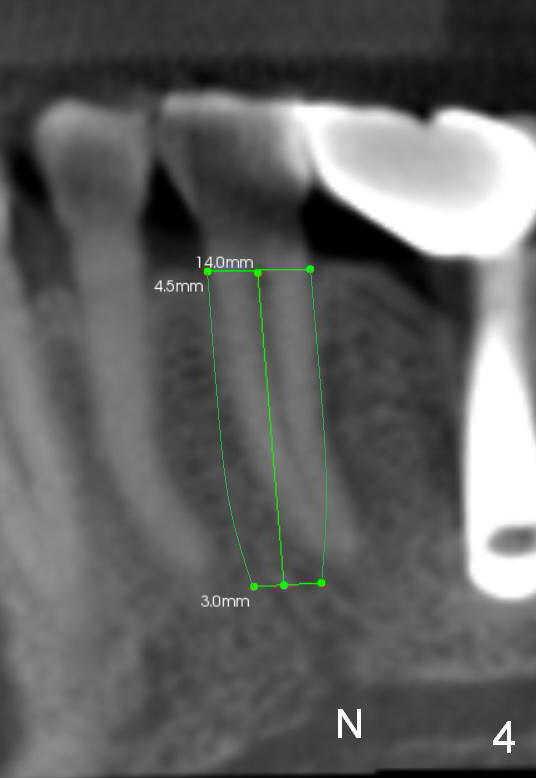
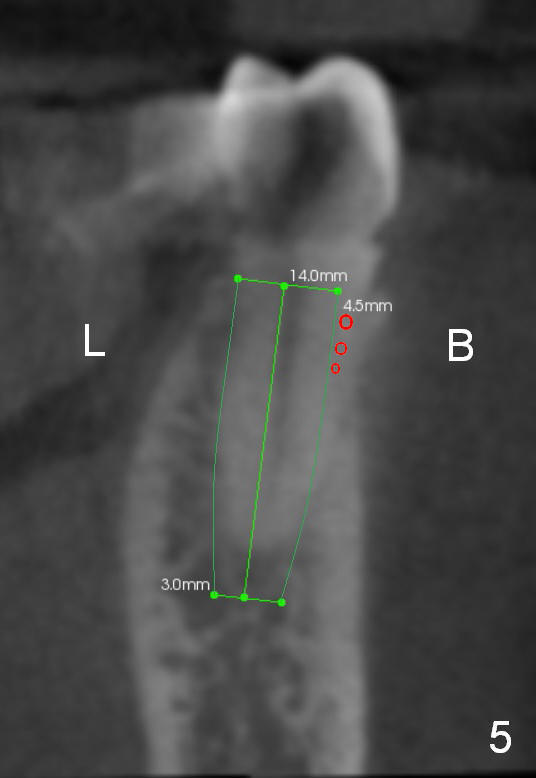
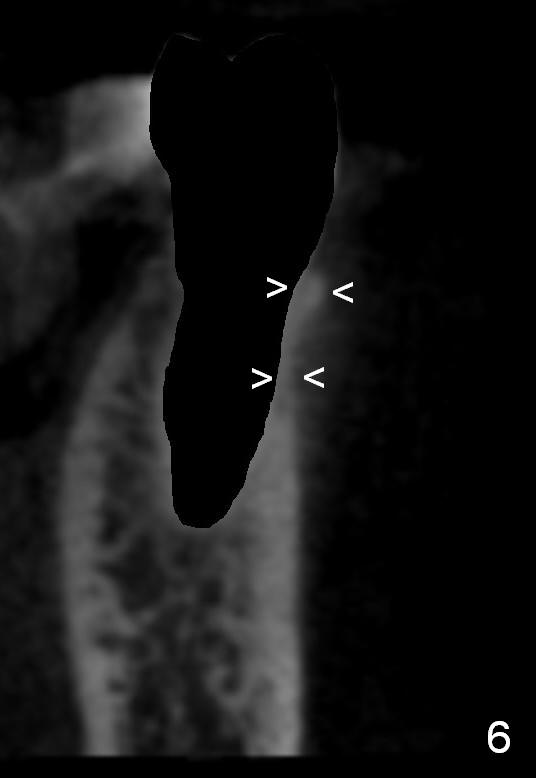
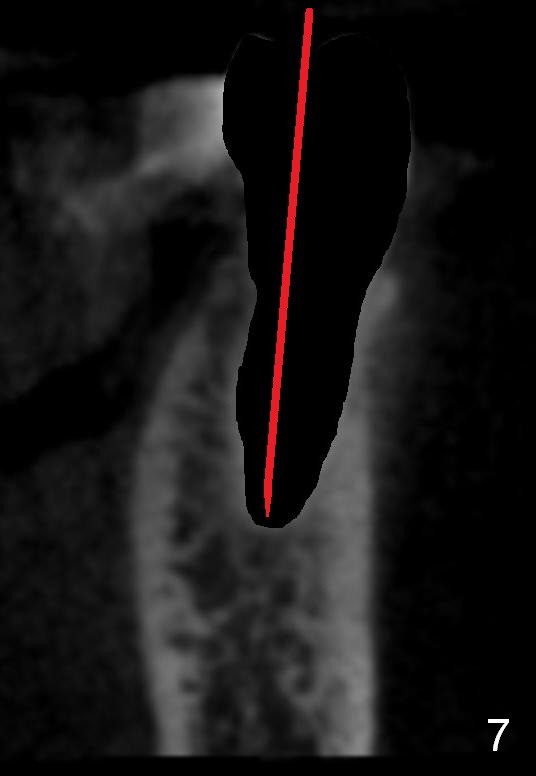
 |
 |
 |
|
 |
 |
 |
 |
Root Length and Buccal Gap
A 56-year-old man has poor dentition (Fig.1). The tooth #20 fractures (not shown) after root canal therapy (Fig.2). A 4.5x14 mm bone-level implant is planned (Fig.3).
CT sagittal section of a similar case shows that the root is also long, but curved (Fig.4). A 4.5x14 mm implant is slightly longer than the root. The apex of the implant has distance to the underlying nerve (N). The coronal section shows that the implant should be placed lingually (Fig.5 L), since the buccal (B) plate is thin (Fig.6 between arrowheads). The first drill (2 mm) is to be placed lingually (Fig.7 red arrow). When the implant is placed, there should be a buccal gap, to be filled with bone graft (Fig.5 red circles).
The 2nd drill will be 2.5 mm reamer (17 mm from the gingival margin). To placed the implant, use a latch driver, followed by latch adapt and torque wrench. If insertion torque is high (>45 Ncm), place cemented abutment (probably 5824 (Fig.3 green line (5.44 mm)) and fabricate an immediate provisional.
Take a PA prior to surgery to show the underlying nerve.
Return to Lower Bicuspid
Immediate Implant,
Dr.
Wu
Xin Wei, DDS, PhD, MS 1st edition 03/17/2015, last revision 03/07/2017